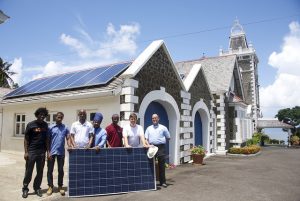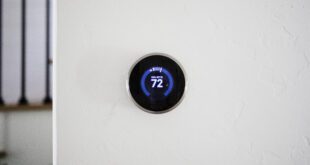World Energy Council Energy Efficiency report applauds progress but seeks further commitment to deliver the promise
Action to be stimulated at COP22 in Marrakesh
 Over the last 15 years’ energy efficiency improvements have saved the world 3.1 gigatonnes (Gtoe) of primary energy consumption and 7Gt of Co2, in 2014 equating to 23% of global energy consumption and 21% of global Co2 emissions in 2014.
Over the last 15 years’ energy efficiency improvements have saved the world 3.1 gigatonnes (Gtoe) of primary energy consumption and 7Gt of Co2, in 2014 equating to 23% of global energy consumption and 21% of global Co2 emissions in 2014.
At an official UN side event held in the side-lines of the COP22 negotiations in Marrakesh, the World Energy Council has released a report highlighting these significant achievements in energy efficiency despite the recent global economic crisis.
The report, ‘Energy Efficiency: A straight path towards energy sustainability’ conducted in collaboration with ADEME, does however reveal that the annual improvement rate of energy efficiency has slowed down from 1.6% between 2000 and 2008 to 1.3% from 2009 to 2014.
Yet real progress is far behind the objective of 2.6% annual energy intensity improvement, despite energy efficiency being one of the top action priorities for energy leaders globally according to the World Energy Council’s issues monitor. The G20, Clean Ministerial, and the UN sustainable development goal number seven all point to the critical contribution of energy efficiency to achieving a low carbon economy.
The new report also highlights that industrial electric motors and electric motor driven systems consume almost half the world’s total electricity, and account for 70% of total electricity consumption within industry world-wide. The cost-effective potential to improve the energy efficiency of motor systems is roughly 20%-30%.
The research concludes that although energy efficiency continues to improve globally and despite significant advances, much more could be done to improve energy production and consumption.
Christoph Frei, Secretary General, World Energy Council, said: “While there has been some progress, there is still not enough being done to drive energy efficiency and to reduce global energy emissions as agreed at COP21 in 2015.
“We still need to develop new policies, strategies and business models to meet the challenge of securing tomorrow’s energy today. We will continue to engage global leaders to create the right policy signals, to scale up new business models, to drive innovation and global trade of best-in-class green goods and services. It’s about encouraging collaboration on regional integration projects that will deliver a sustainable future.”
François Moisan, Chair, World Energy Council Knowledge Network on Efficiency policies, and Director of Strategy and Research, ADEME (France) said: “The introduction of energy efficiency policies and measures has been growing fast around the world. The increasing number of countries with an energy efficiency law, ten more compared to the 2013 report, signifies a strengthening and consolidation of the institutional commitment to energy efficiency.”
The report makes the following recommendations to advance energy efficiency improvements:
• Energy prices should closely reflect the real cost of supply. Countries should set deadlines for a gradual energy pricing reform
• Consumers need to be better informed. It is necessary to simplify messages on energy efficiency to reach the majority of consumers
• New technologies including smart meters and billing offer attractive benefits and their wide introduction should be supported by policies
• Innovative financing tools need to be widely introduced to alleviate the public budgets from the financial and fiscal incentives
• Regulations must be regularly reviewed and strengthened if necessary and labelling and MEPS should be regularly revised and upgraded
• Monitoring achievements and the impacts of measures is necessary to check the real impact of energy efficiency policies
• The development of international or multi-national standards can help enhance international and regional cooperation, in addition to regional testing and harmonisation of equipment testing standards and facilities. International energy mediums should be used to exchange experiences for policies benchmarking and identification of best practices.
• Efficiency labels guide consumers towards more energy efficient appliances and motivates manufacturers to supply more energy efficient products. However, labels alone are not sufficient to transform markets, they need to be complemented with Minimum Energy Performance Standards (MEPS) to remove inefficient equipment and introduce best practices. The MEPS set the minimum performance criteria to be achieved by new appliances or buildings.
• Price signals are key but alone are also not enough to improve efficiency. Clear and targeted policies are required to reinforce the role of energy prices in market economies and support a wider deployment of energy efficient equipment and services which would drive consumer choice towards the most efficient and cost effective solutions.
 Alternative Energy HQ solar power for homes, wind energy, and bio fuel issues
Alternative Energy HQ solar power for homes, wind energy, and bio fuel issues







